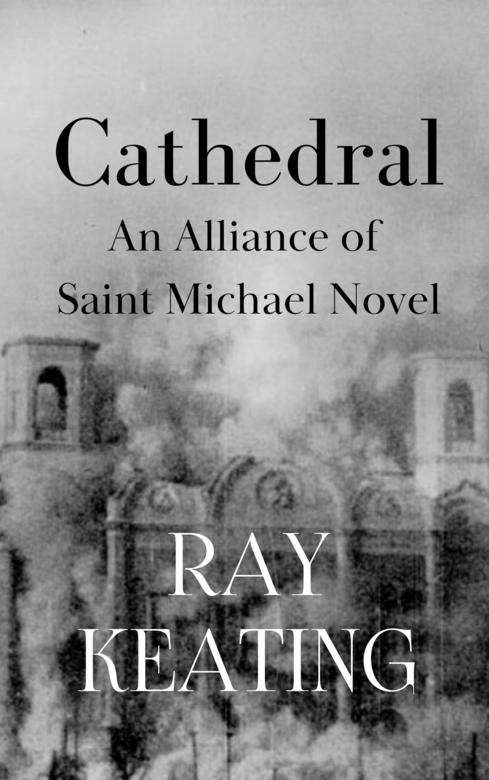
A stellar depiction of time period and tension, Cathedral by Ray Keating is the bold opening hymn of his new Alliance of Saint Michael series.
During a religious conference at Georgetown University, Pastor Eric Meyer and Father Patrick O’Riley help to avert an assassination attempt by communist agents bent on curing the world of religious devotion. Their bravery doesn’t go unnoticed by powerful observers in the room, and they are soon recruited into service by the Alliance of Saint Michael – a secretive sect operating from within the Institute for Christian Life, History and Arts. Little do they know that those split-second heroics will bring them halfway around the world, to the heart of the Soviet Union, on a covert mission to recover a priceless relic of Christian history.
There is a charming buddy cop vibe to the friendship of these two protagonists, as both defy stereotypes of their spiritual callings. The rest of the recovery team is equally well-developed, each with their own intriguing backstories that have made them warriors for the cross, particularly the unassuming Arthur Davies. Helen Pomeroy is another key player that adds complexity, both as a romantic interest of Meyer and the daughter of a powerful Alliance founder.
With so many swirling motives and three-dimensional characters in the mix, there is inherent tension for readers, as they eagerly anticipate one of Keating’s classic twists. As loyal readers will know about the author’s style, he builds his plot slowly, bouncing around the globe, and through time, as he carefully lays narrative pieces in place. The depth of historical detail is notable; a good deal of research went into the crafting of this novel, which gives it an authentic and immersive feel. The story is primarily set in the early 1930s, an era where the United States has yet to rise into a position of global leadership, European power struggles are complex and violent, and world peace teeters on a dangerous precipice, and the era is portrayed with vivid detail.
Given the premise of the series, religion obviously plays a large part in the plot, which includes some potentially controversial ideas, but the prose never feels like proselytization. That said, Christianity is placed on a proverbial pedestal of morality and righteousness from the very beginning of this novel, and this conflation may raise eyebrows of more progressive readers. However, the historical setting should soften these objections.
Similar to Dan Brown’s crypto-religious thrillers, this novel blurs the lines between fact, fiction, and belief in an intoxicating way. There are other similarities as well, such as brief chapter lengths to keep the pace up, and a declarative style to the prose. The action sequences are also quite matter-of-fact, leaving little room for description or scene-setting, and sometimes it can be hard for readers to sense the stakes. The book is a hefty length, even with these omissions, and some scenes feel less essential than others, as though the author was determined to include as many side plots as possible.
That said, the complex puzzle makes for a page-turning and unpredictable ride, and a firm foundation for Keating’s enticing new series.
Book Links
STAR RATING
Design
Content
Editing
Get an Editorial Review | Get Amazon Sales & Reviews | Get Edited | Get Beta Readers | Enter the SPR Book Awards | Other Marketing Services























Leave A Comment